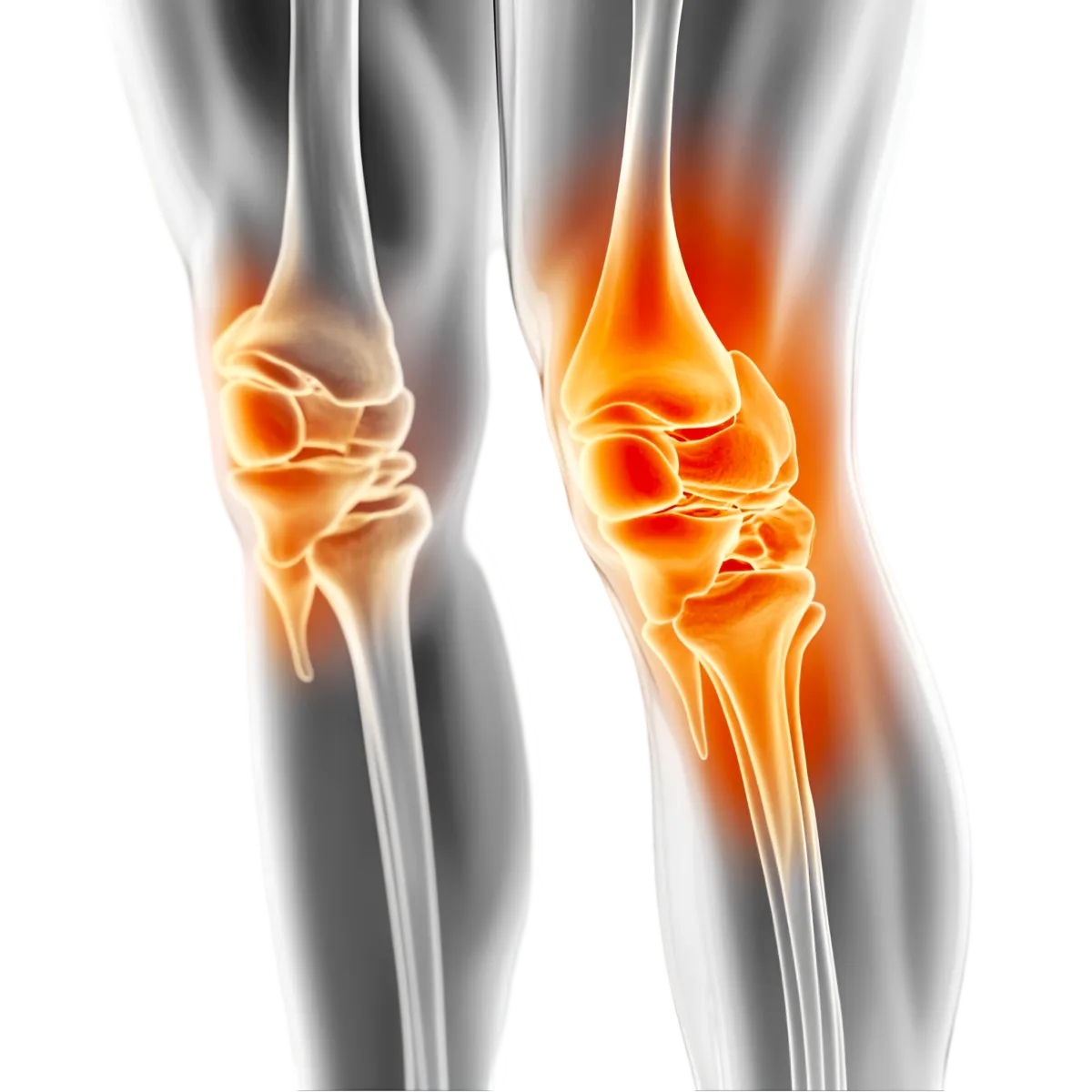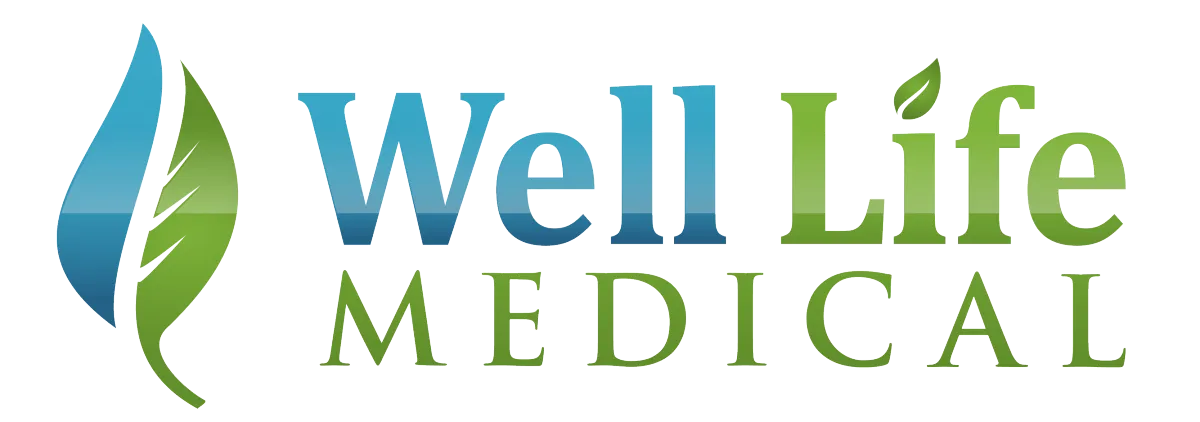
Over 120 Positive Reviews!
Stop Letting Knee Pain Control Your Life
You don't have to live like this — and you don't have to go under the knife to get better.

We Understand Knee Pain—And We Know How to Fix It.
Our expert team has helped hundreds of patients in Amarillo reduce or eliminate their chronic knee pain using innovative treatments that actually target the root cause of the issue—whether that's cartilage breakdown, inflammation, or degeneration.
We specialize in:
Platelet-Rich Plasma (PRP) Therapy
Using your body's own healing factors to stimulate repair and reduce inflammation.
Stem Cell Injections
Harnessing the regenerative power of stem cells to repair damaged tissue.
Visco (Gel) Injections
Providing lubrication and cushioning to improve joint function and reduce pain.
Comprehensive Pain Evaluations
Identifying the exact cause of your pain for targeted treatment.
Custom Treatment Plans Tailored to You
Because your pain is unique, and your treatment should be too.
We're not in the business of masking symptoms. We're here to help your knees heal.
Here's How It Works
Three simple steps to help you live pain free.

Book Your Consultation
We'll evaluate your knee health and walk you through all your options—honestly and transparently.

Get a Custom Treatment Plan
We'll create a treatment plan tailored to your condition, lifestyle, and goals. No cookie-cutter care here.

Start Living Without Knee Pain
Most patients see improvement within weeks—without surgery, long-term meds, or major downtime.
Take the First Step Today.
Call us at (806)304-0740 or fill out the form below to talk with one of our pain experts. No pressure. No obligation. Just clarity—and a path forward.
Pain-Free Living Is Waiting
You Don't Need a Referral
Schedule your personalized consultation today!
...and give your knees (and your life) the chance they deserve.
Causes of Joint Pain
Arthritis is the most common cause of disability among U.S. adults, affecting about 23 percent. Arthritis usually involves inflammation
and/or degeneration of your joints, causing pain when you use said joint. Feet, hands, hips, knees, and lower back are most commonly
affected.
Joint pain can also stem from old injuries in which the tissues of the joint were damaged. Normal healing relies on platelets that trigger
cell regeneration and tissue repair. However, in the case of serious injuries, joints may experience damaged or missing cartilage for
years afterwards. Surgery is an option for removing scar tissue and replacing key parts of the knee, but this can be costly — not to
mention painful during recovery.

Prolotherapy Injections
Prolotherapy is short for proliferative therapy, in which a dextrose-based solution triggers new growth of connective tissue. It works by stimulating fibroblasts, which produce collagen, a major component of our tendons and ligaments. By injecting the solution into the painful joint, prolotherapy causes fibroblasts to jump into action and encourage the proliferation of new collagen-making cells. If you’re suffering from an old injury to your ligaments or tendons, or if they’re not as strong and flexible if they used to be, prolotherapy can help restore that connective tissue.

Stem Cell Injections
Like PRP, stem cell therapy uses your body’s regenerative powers to promote new tissue growth in your joints. In this treatment option, stem cells from your own body are injected into the painful joint. This promotes further healing and new cell proliferation, which can help restore cartilage and connective tissue in your knees, wrists, elbows, and more. Like PRP, stem cell treatment is entirely non-surgical, relatively painless, and has little chance of rejection of adverse reactions, because the stem cells come from your own body.

Acupuncture
Acupuncture is an ancient medicinal practice in which small needles are inserted into the skin. The metal in the needles conducts energy throughout the tissues. This can stimulate myofascial trigger points, releasing trapped or cramped tissue and promoting new cellular growth. The needles can also boost the release for neurotransmitters, such as dopamine and norepinephrine, which modulate pain. Acupuncture is a time-honored, painless, and effective treatment option for chronic knee and joint pain.

Physical Therapy
If you’ve sustained an injury to your knee, you may have too much damage to your joint’s soft tissues for your body to naturally heal. Physical rehabilitation uses low-level exercise and localized joint activities to promote new healing and tissue regrowth. Without rehab, an injured joint may settle into its damaged state. By continuing to exercise the joint in a medically supported environment, we can help you restore the lost or damaged tissue and develop better mobility with less pain.

Infrared Sauna
Infrared saunas can reduce knee pain in addition to those dealing with painful conditions like, fibromyalgia, chronic headaches, and rheumatoid arthritis, by releasing your body’s natural painkillers, endorphins, which have an opioid-like effect. Recommended treatment times for infrared saunas range from 10 to 30 minutes, and with proper use, pose no serious side effect risk and are safe for the majority of people. However, due to the higher temperatures and sweating, you can experience lightheadedness. It’s important to drink plenty of water to stay hydrated since you are losing fluids through sweating. Also, if you have heart problems, are on medications, or are sensitive to heat, it is always a good idea to talk with your doctor to make sure our infrared sauna use is right for you.

Hyperbaric Chamber
Hyperbaric oxygenation is very efficient for the treatment of joint pain and reducing inflammation, because the increased arrival of oxygen to joint and tendon tissues produces rapid inflammation and repair, promoting recovery and mobility. It also helps the immune system. Among its benefits:
Provides more oxygen to the joint tissues
It has anti-inflammatory effects
Promotes recovery and mobility
Help the immune system
The patient enters our pressurized hyperbaric chamber where they receive pure oxygen at a pressure higher than normal atmospheric pressure. No other drug is provided, and it is a safe and non-invasive treatment. The doctor is the person who prescribes the number of sessions and their duration.

IV Nutritional Support
Nutrients that build bone density, strengthen connective tissue and reduce inflammation can help you prevent injuries and preserve your joints for a long, active life. IV nutritional support can be helpful when paired with regenerative injections. We recommend starting any discussed supplement regiment at least one week prior to the injections and continue for at least one month after injections for optimal results.

Shockwave Therapy
Despite its name, shockwave therapy is a relatively painless procedure in which mild electromagnetic waves are administered to painful joints. The subtle vibrations stimulate cells that contribute to new tissue growth. Shockwave therapy is essentially a wave of jump-starting the healing process, which may have naturally concluded before the joint was fully restored. If the cartilage, tendons, and ligaments have degraded due to the age, shockwave treatment can trigger the healing process, causing new tissues to develop. This helps the joint feel more mobile and flexible.

Well Life Medical. Amarillo, TX
(806) 304-0740
© 2025 Well Life Family Medicine. All rights reserved.